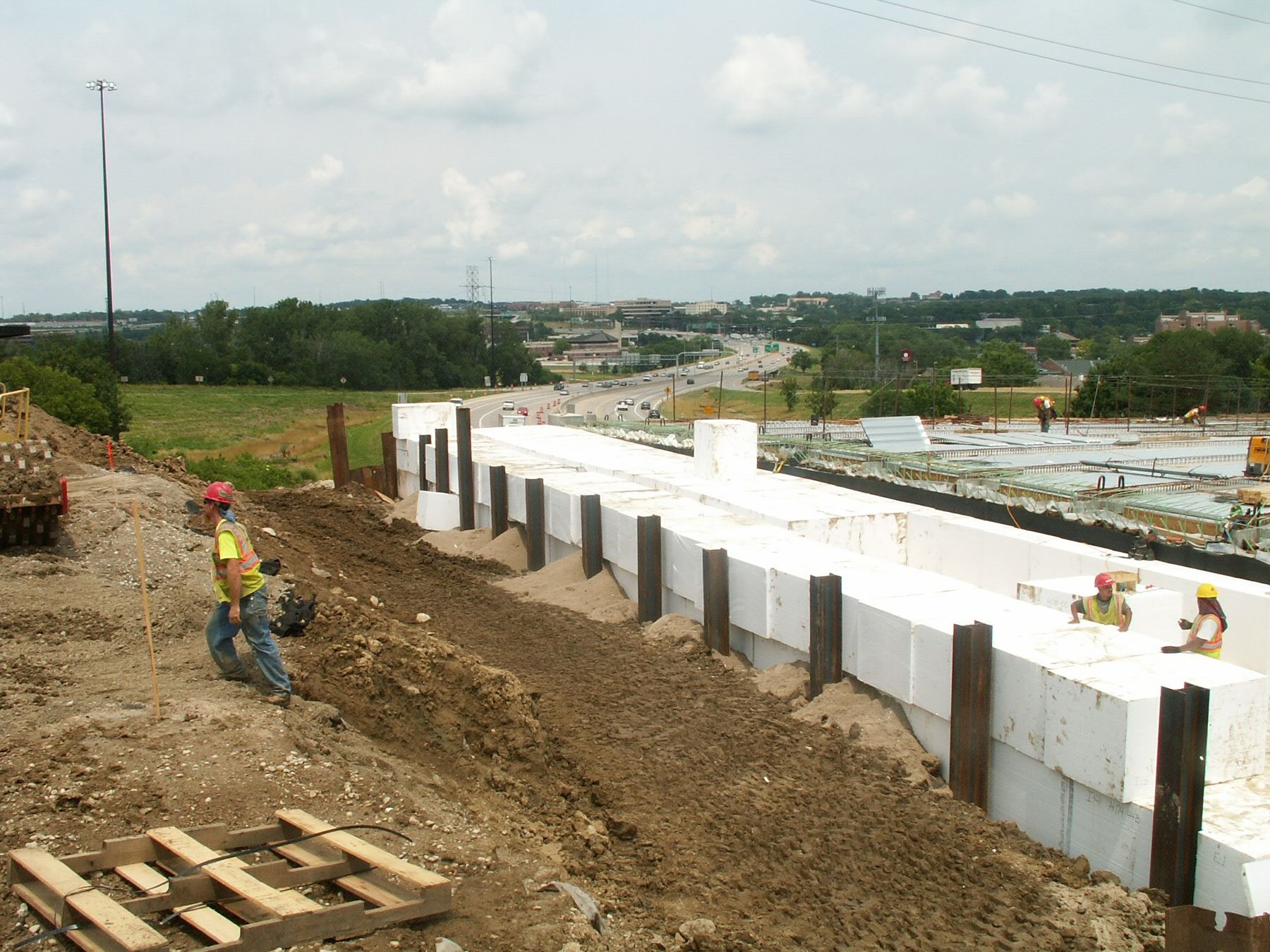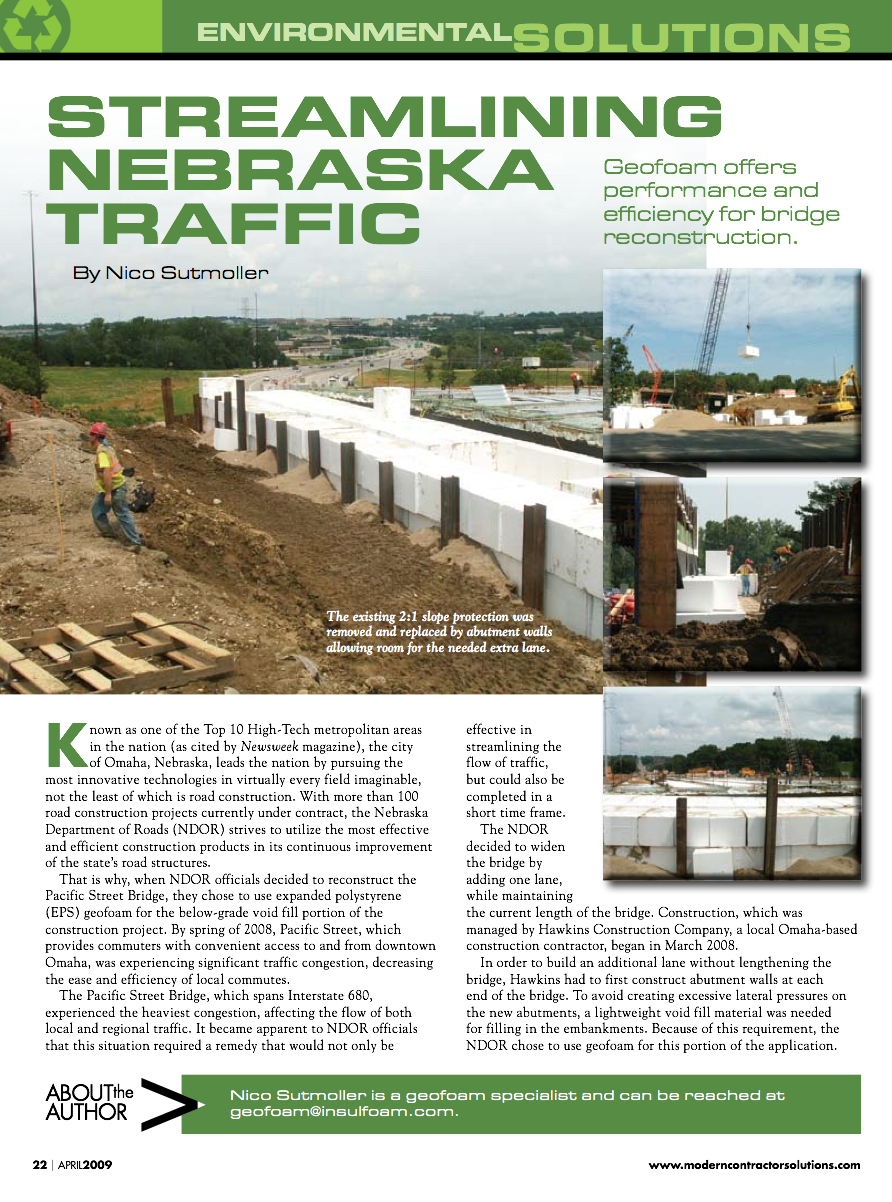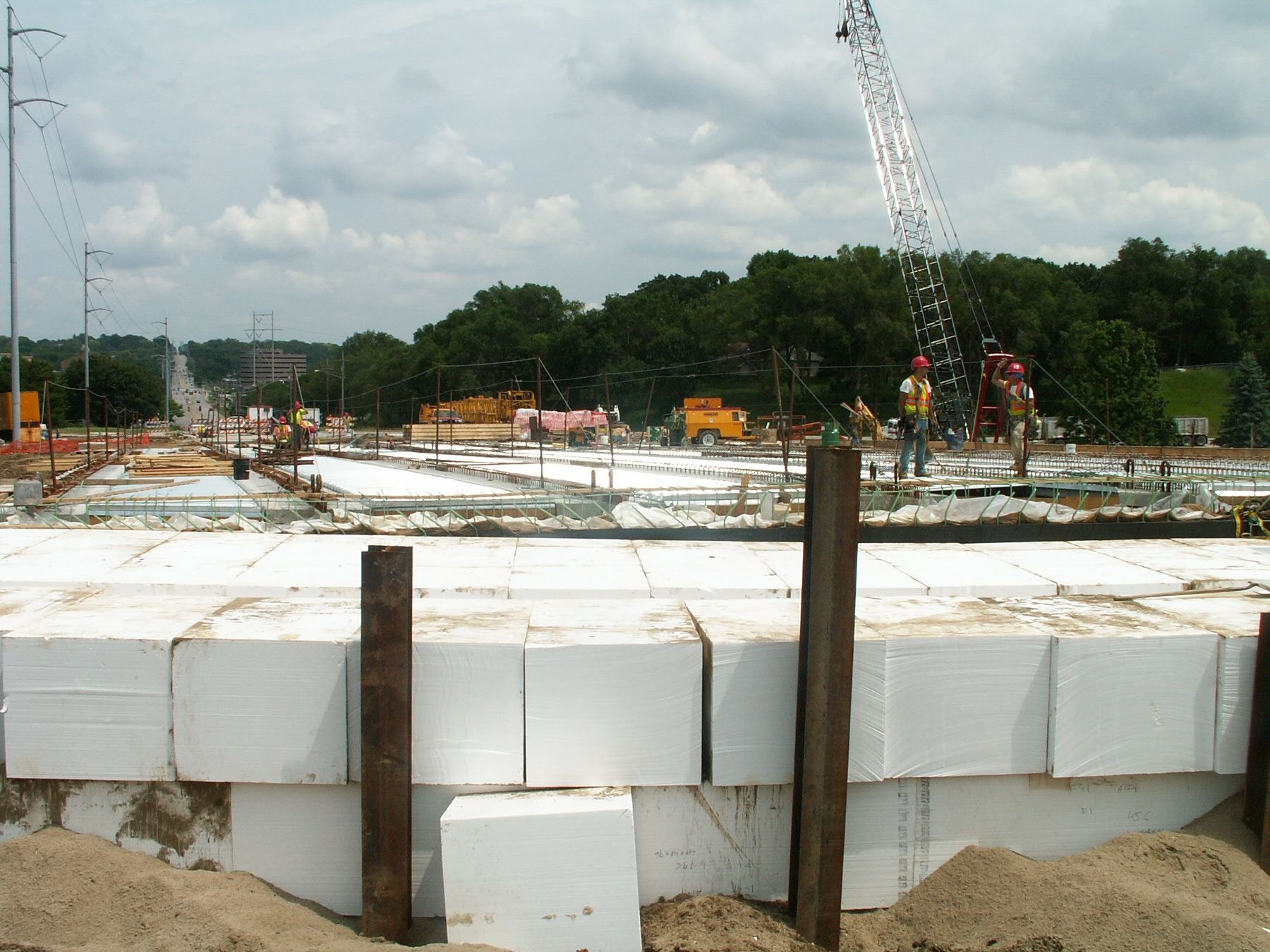Originally published in Modern Contractor Magazine, April 2009
Known as one of the Top 10 High-Tech metropolitan areas in the nation (as cited by Newsweek magazine), the city of Omaha, Nebraska, leads the nation by pursuing the most innovative technologies in virtually every field imaginable, not the least of which is road construction. With more than 100 road construction projects currently under contract, the Nebraska Department of Roads (NDOR) strives to utilize the most effective and efficient construction products in its continuous improvement of the state’s road structures.
That is why, when NDOR officials decided to reconstruct the Pacific Street Bridge, they chose to use expanded polystyrene (EPS) geofoam for the below-grade void fill portion of the construction project. By spring of 2008, Pacific Street, which provides commuters with convent access to and from downtown Omaha, was experiencing significant traffic congestion, decreasing the ease and efficiency of local commutes.
The Pacific Street Bridge, which spans Interstate 680, experienced the heaviest congestion, affecting the flow of both local and regional traffic. It became apparent to NDOR officials that this situation required a remedy that would not only be effective in streamlining the flow of traffic, but could also be completed in a short time frame.
The NDOR decided to widen the bridge by adding one lane, while maintaining the current length of the bridge. Construction, which was managed by Hawkins Construction Company, a local Omaha-based construction contractor, began in March 2008.

Pacific Street Bridge, Nebraska: The existing 2:1 slope protection was removed and replaced by abutment walls allowing room for the needed extra lane
In order to build an additional lane without lengthening the bridge, Hawkins had to first construct abutment walls at each end of the bridge. To avoid creating excessive lateral pressures on the new abutments, a lightweight void fill material was needed for filling in the embankments. Because of this requirement, the NDOR chose to use geofoam for this portion of the application.
After comparing a number of geofoam manufacturers, Hawkins Construction chose to use geofoam manufactured by Insulfoam, the nation’s largest manufacturer of block-molded expanded polystyrene.
“It was vital that we use a product that would not increase the amount of lateral load placed on the new abutments,” said Omar Qudus, NDOR Geotechnical Engineer. “We chose to use geofoam because it would do just that, and would enable us to fill the embankments while still being able to build the additional lane.”
As this was the NDOR’s first specification of geofoam, Qudus and his team consulted multiple geofoam manufacturers in order to ensure that the geofoam was used correctly and in a way that would enhance both the performance of the bridge and the efficiency of the construction.
“We talked to a number of geofoam manufacturers,” says Qudus, ”because we wanted to make sure that we were using the geofoam product correctly. Insulfoam provided ample feedback and a detailed specification of how InsulFoam® GF can be used in this type of application.”
The construction project required a total of 2,045 cubic yards of type 15 EPS low-density geofoam blocks that were installed as void fill at the bridge abutments.
After pouring the abutment walls, the Hawkins crew installed the geofoam blocks, which not only provided easy handling, but also sped up the installation process. The use of geofoam eliminated both the need for surcharge and the settlement that is experienced with typical fill products, such as soil.
“We used geofoam for this project because we did not have enough time for both the surcharge and settlement that are typical with the application of traditional fill products,” says Qudus.
Hawkins’ on-site supervisor, Lance Winkler, agreed that the use of geofoam significantly reduced construction time. “With traditional fill products, we typically backfill with sand at 8-inch increments and then compact; with geofoam, we just placed the blocks in position and then backfilled the minimal area that was left with sand. The InsulFoam® GF made installation easier and more efficient.”
Installation of a drainage mat was also necessary in order to ensure that any water that might collect around the abutment would drain properly and decrease the potential for any damage that might be caused by moisture penetration. By ensuring that water drained away from the abutment, the drainage mat would also eliminate the horizontal pressure that standing water would create.
The entire construction project was completed by September 2008, a short 6 months after it was started, and the bridge was re-opened to traffic. The use of geofoam in this project not only offered enhanced labor and cost savings, but also provided the increased, long-term stability and superior performance needed for the ever-moving technological hub of Omaha, Nebraska.
INSULFOAM GEOFOAM QUESTIONS
Contact Nico Sutmoller, Geofoam Specialist
Ask Nico to Connect on LinkedIn | Follow Insulfoam on LinkedIn




